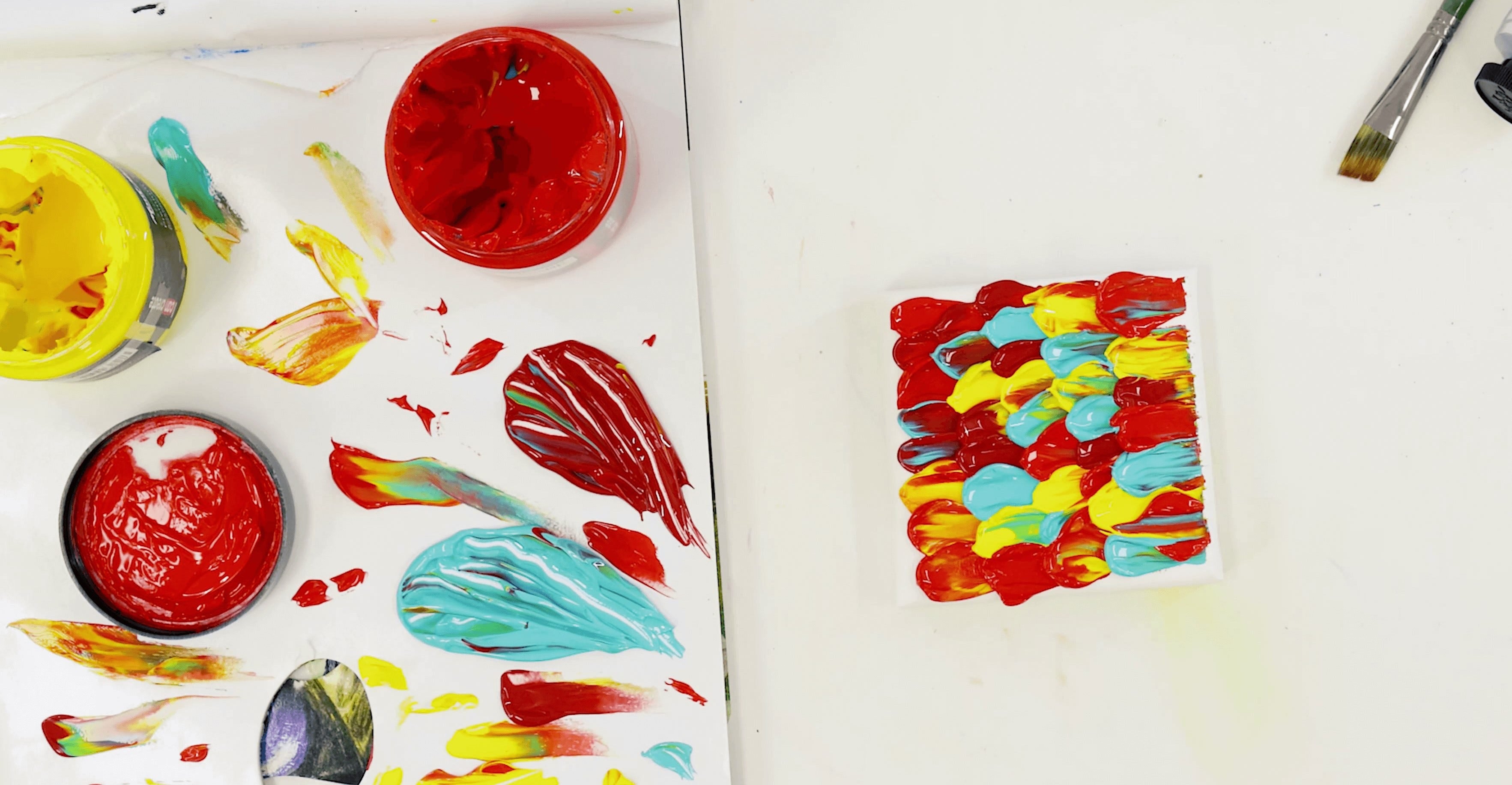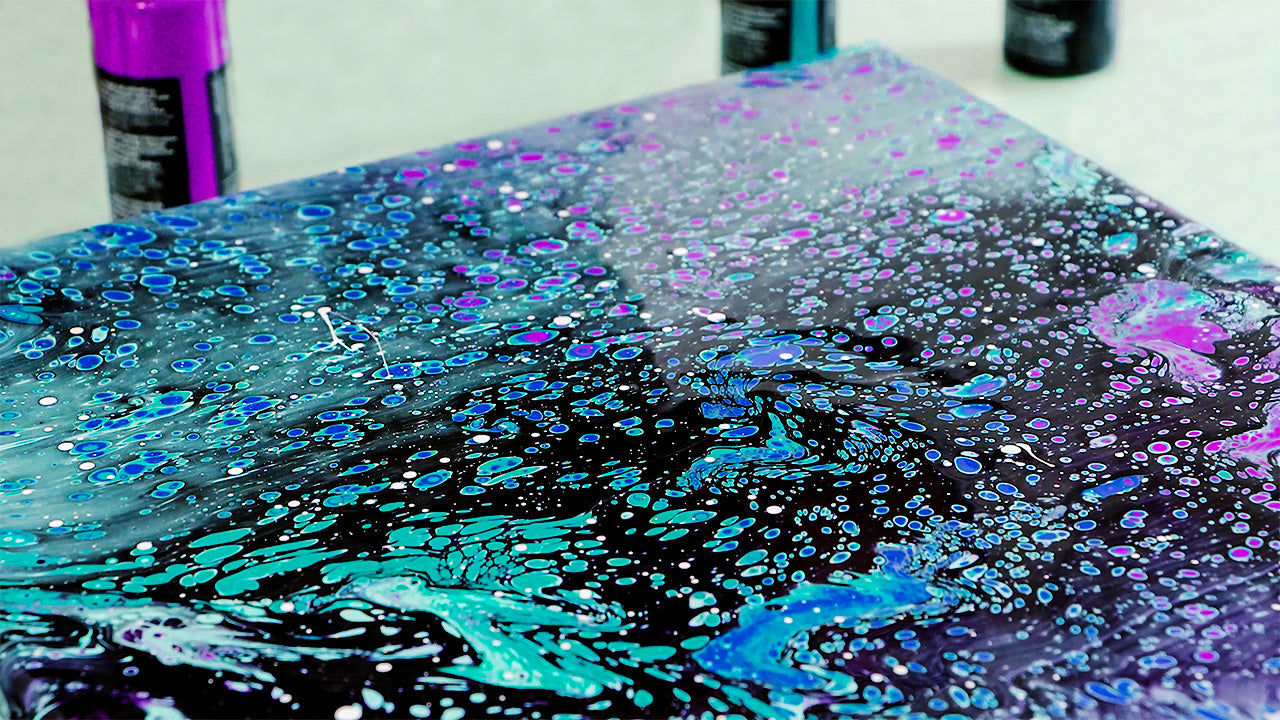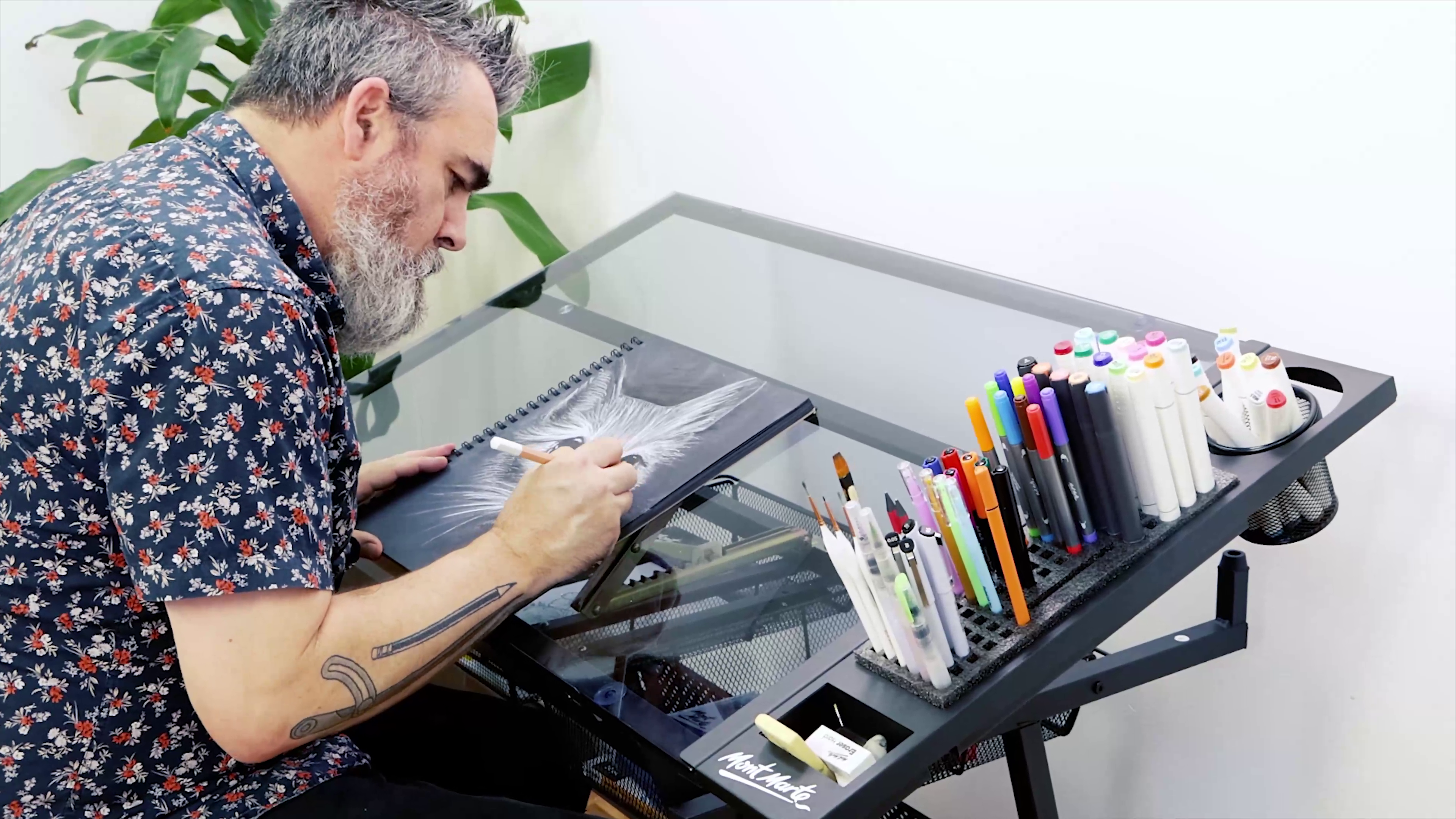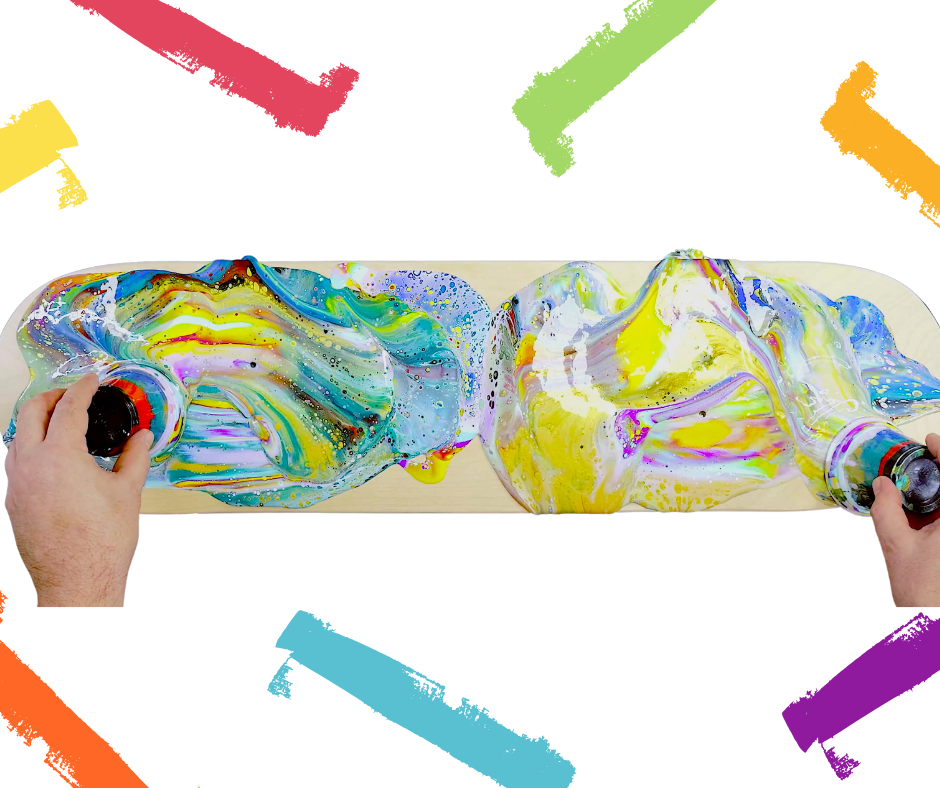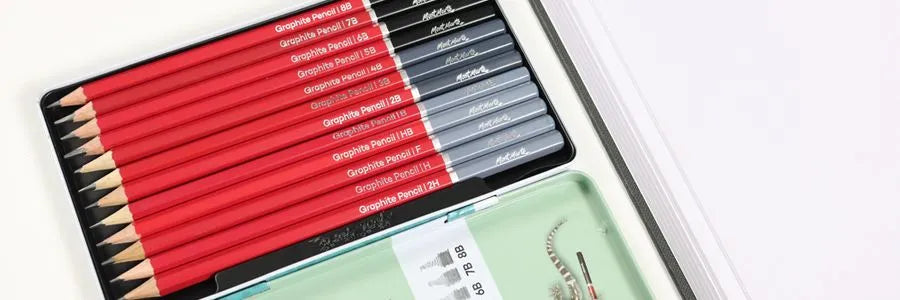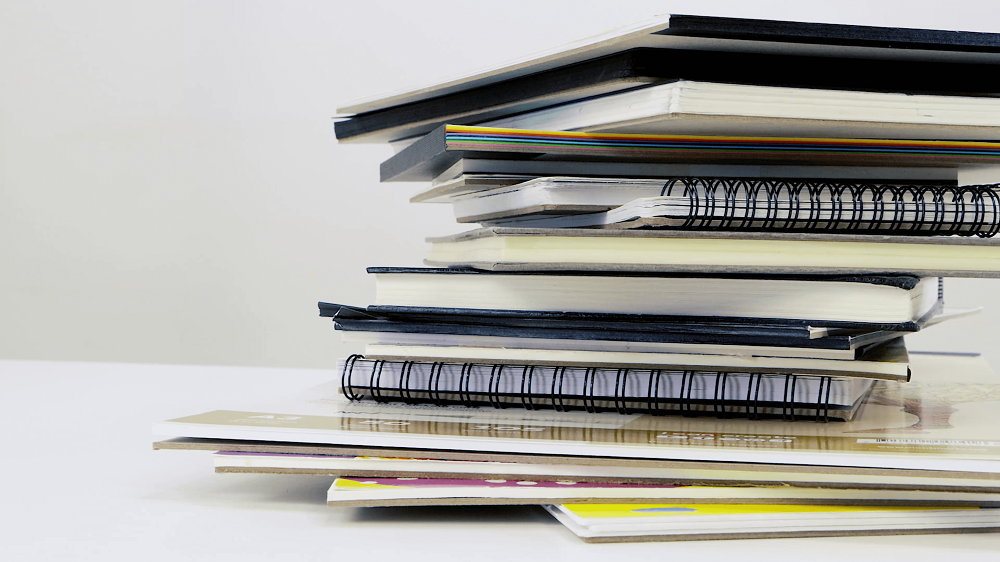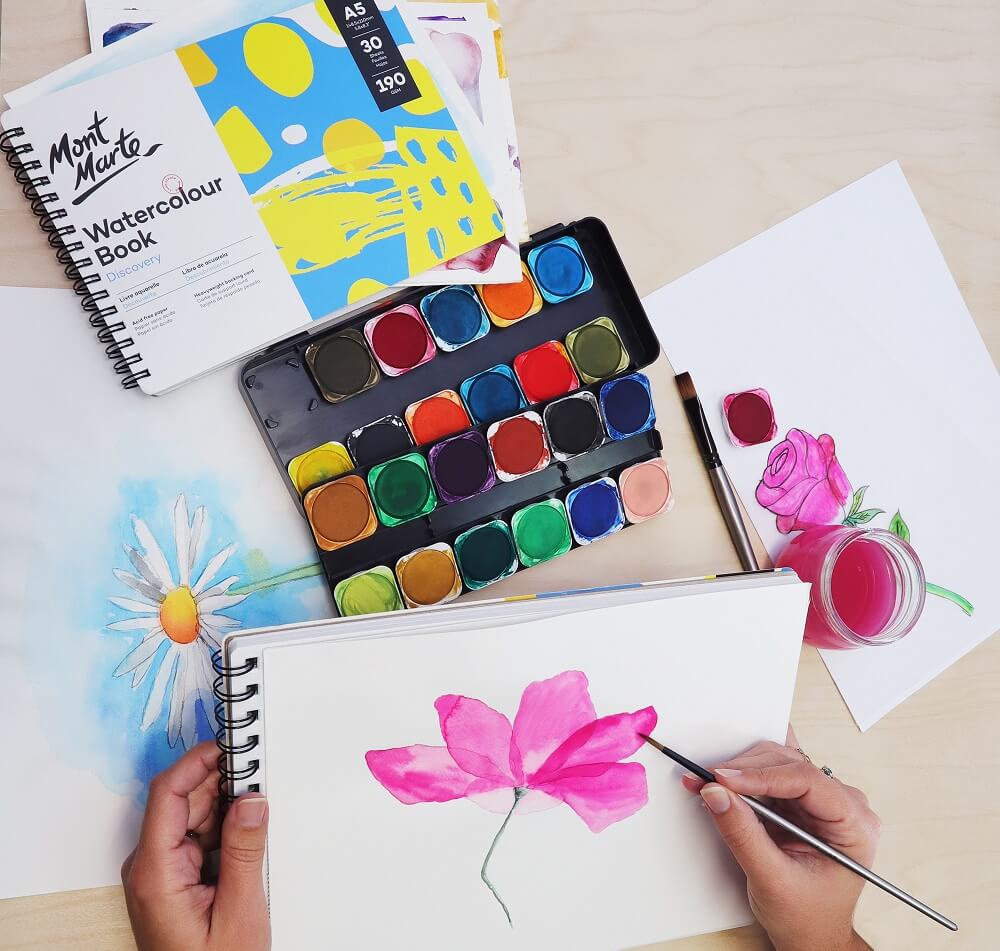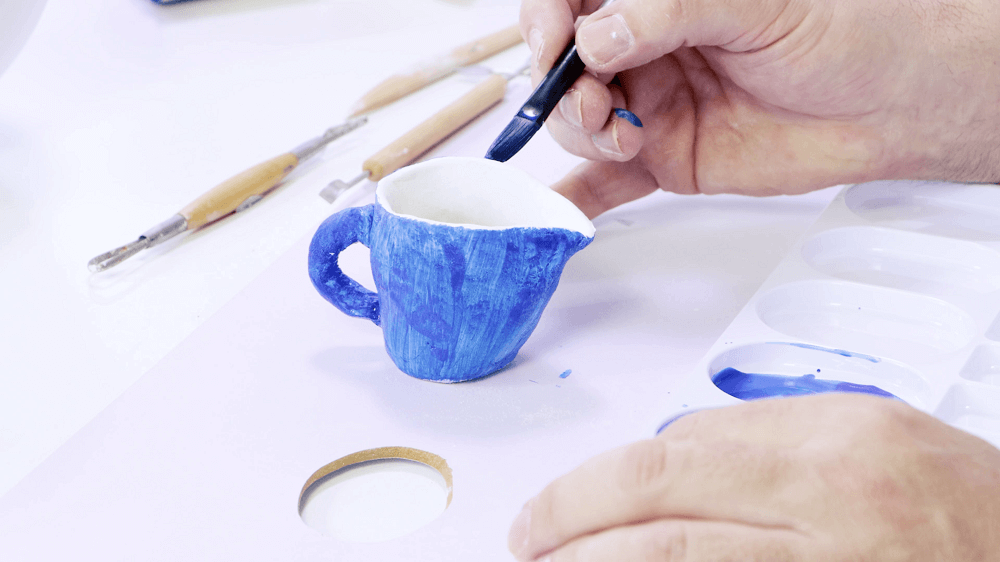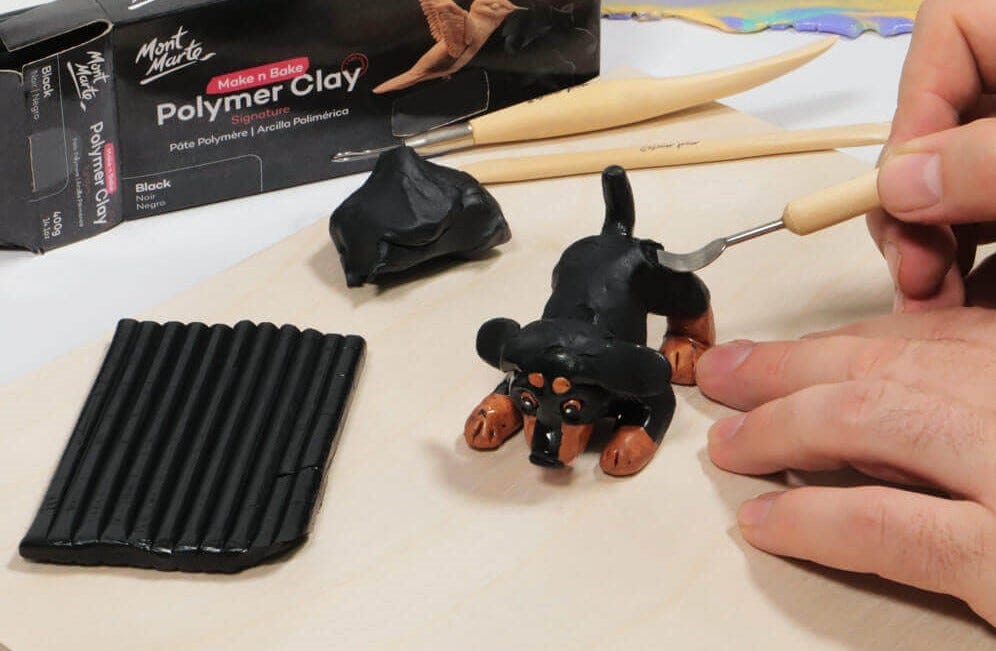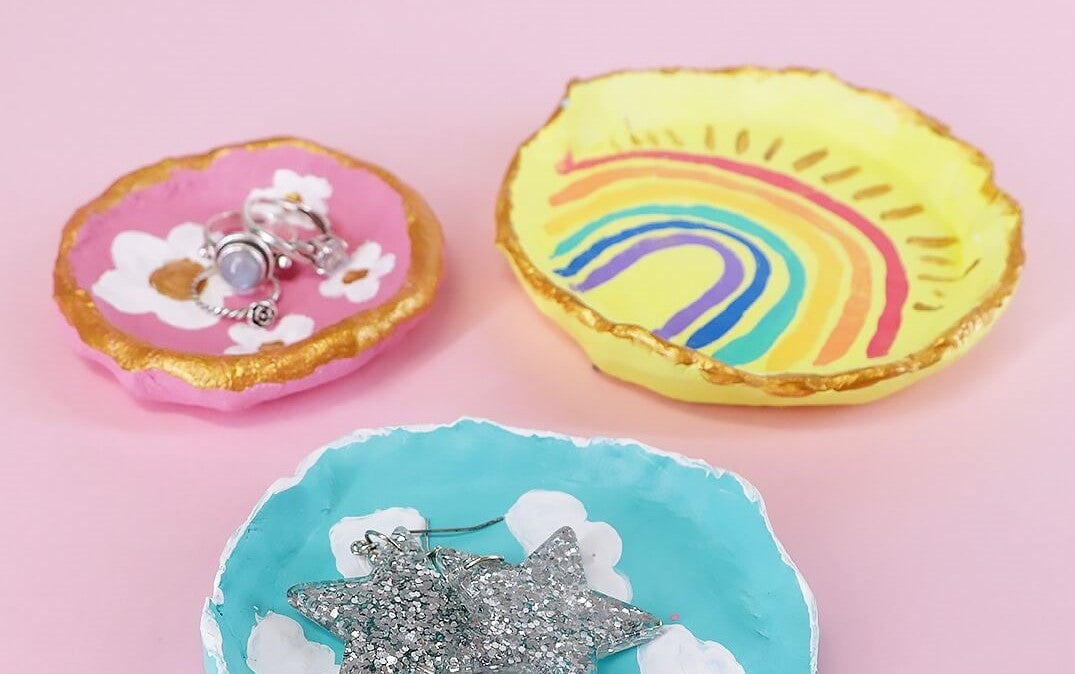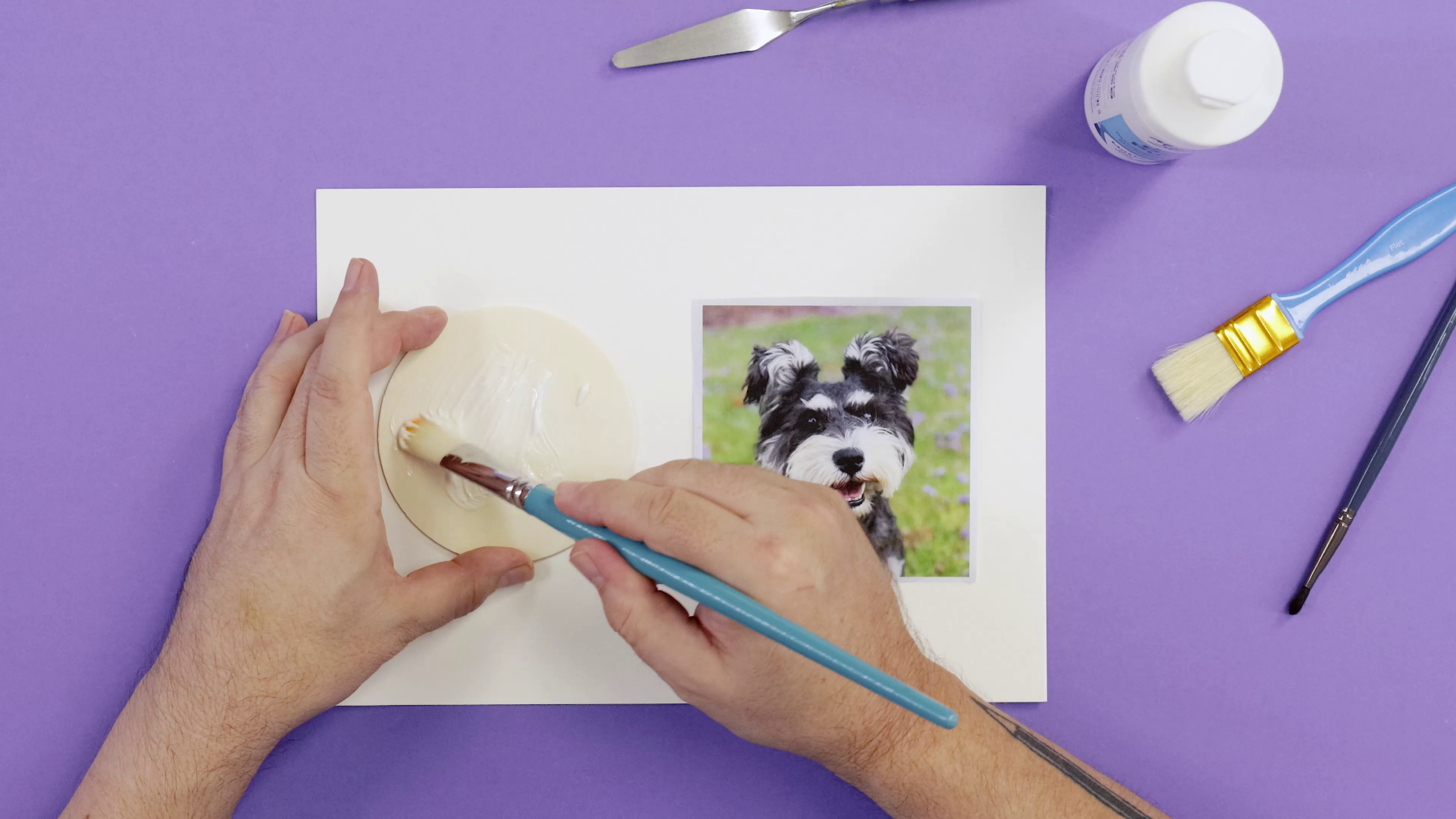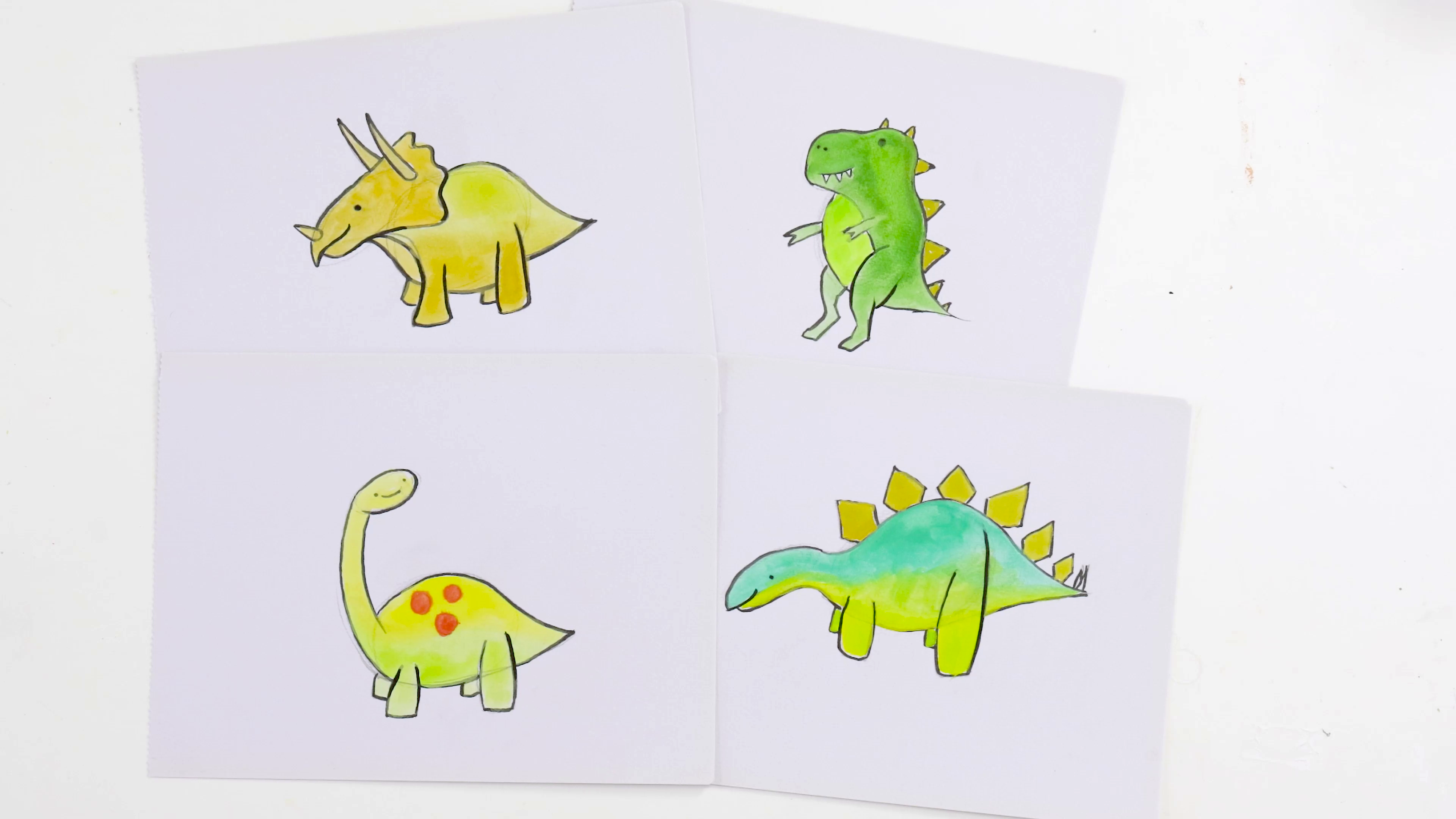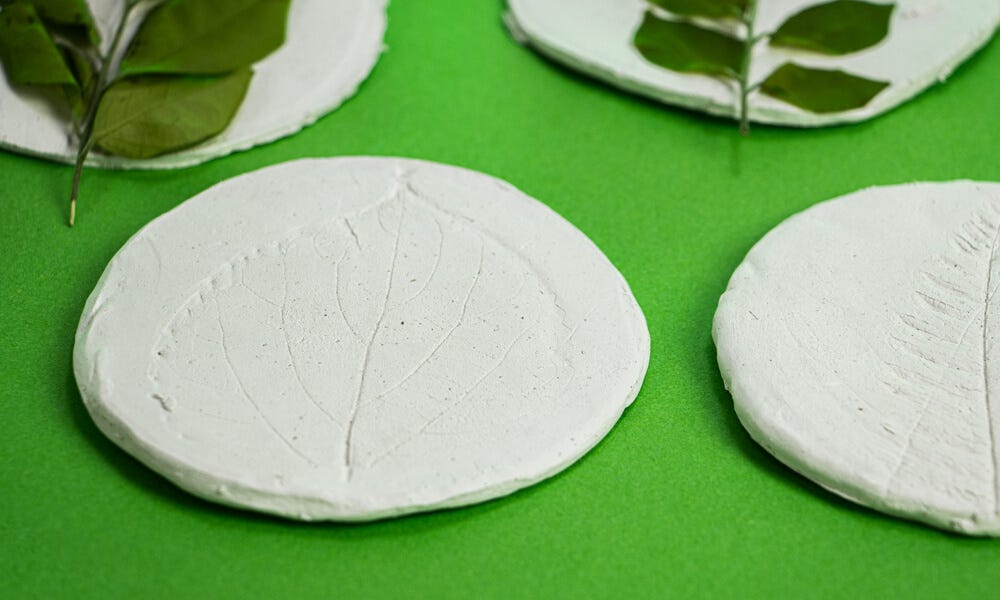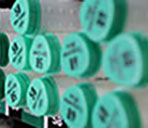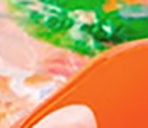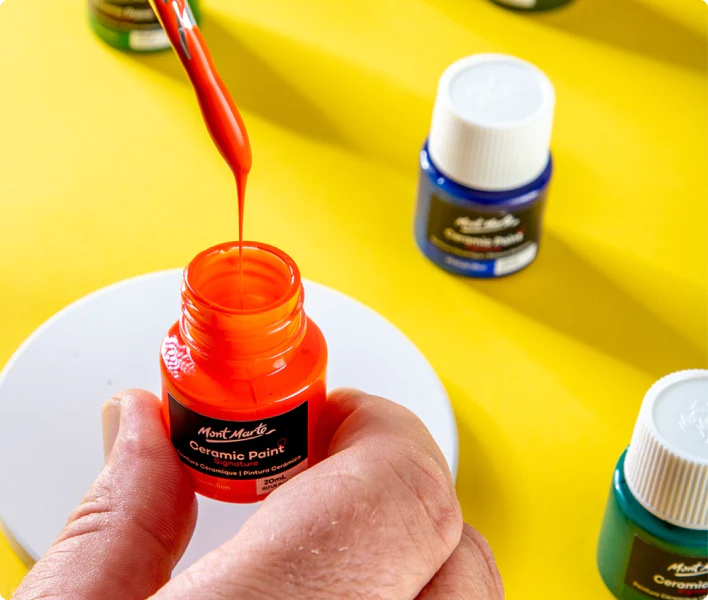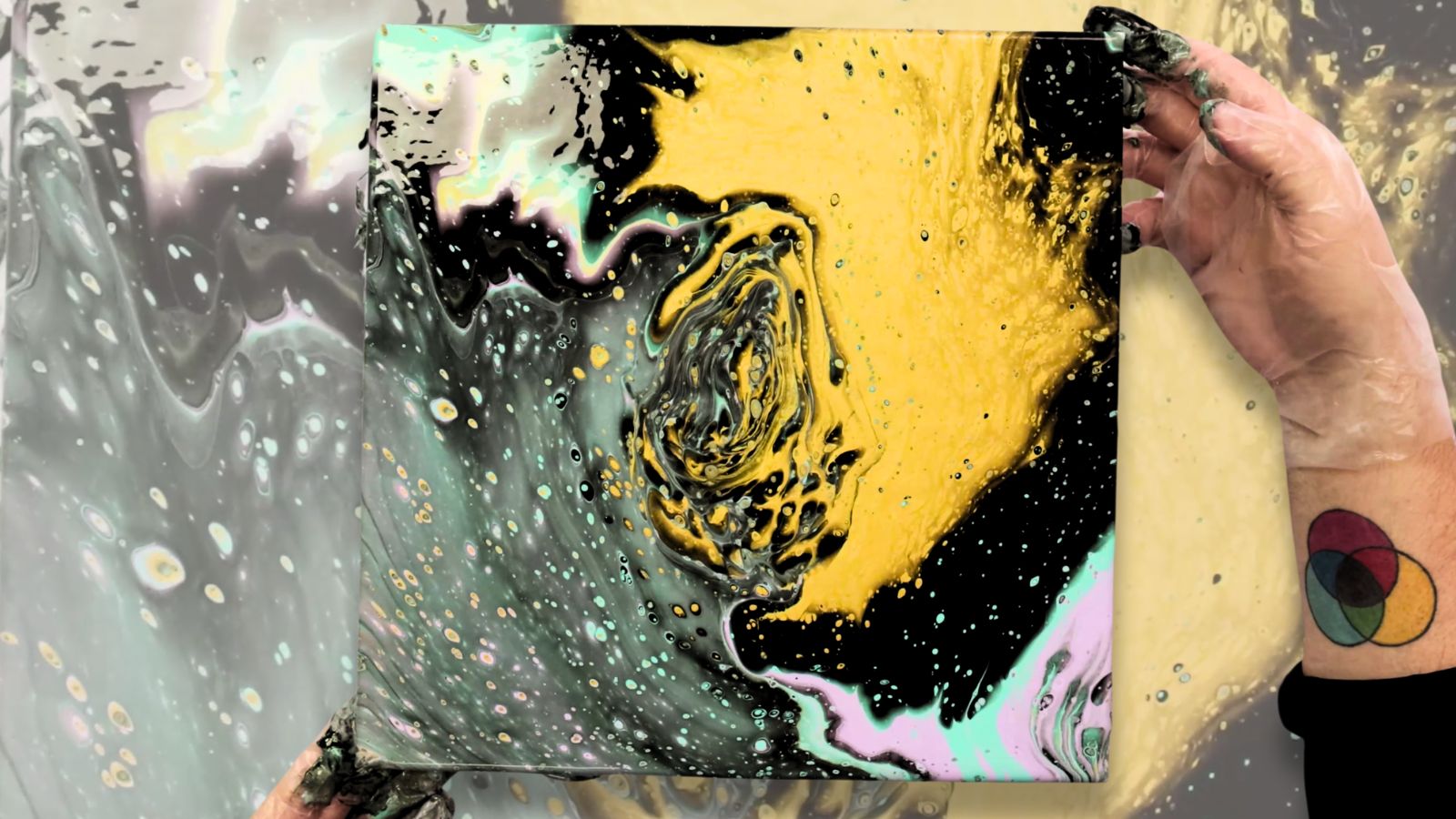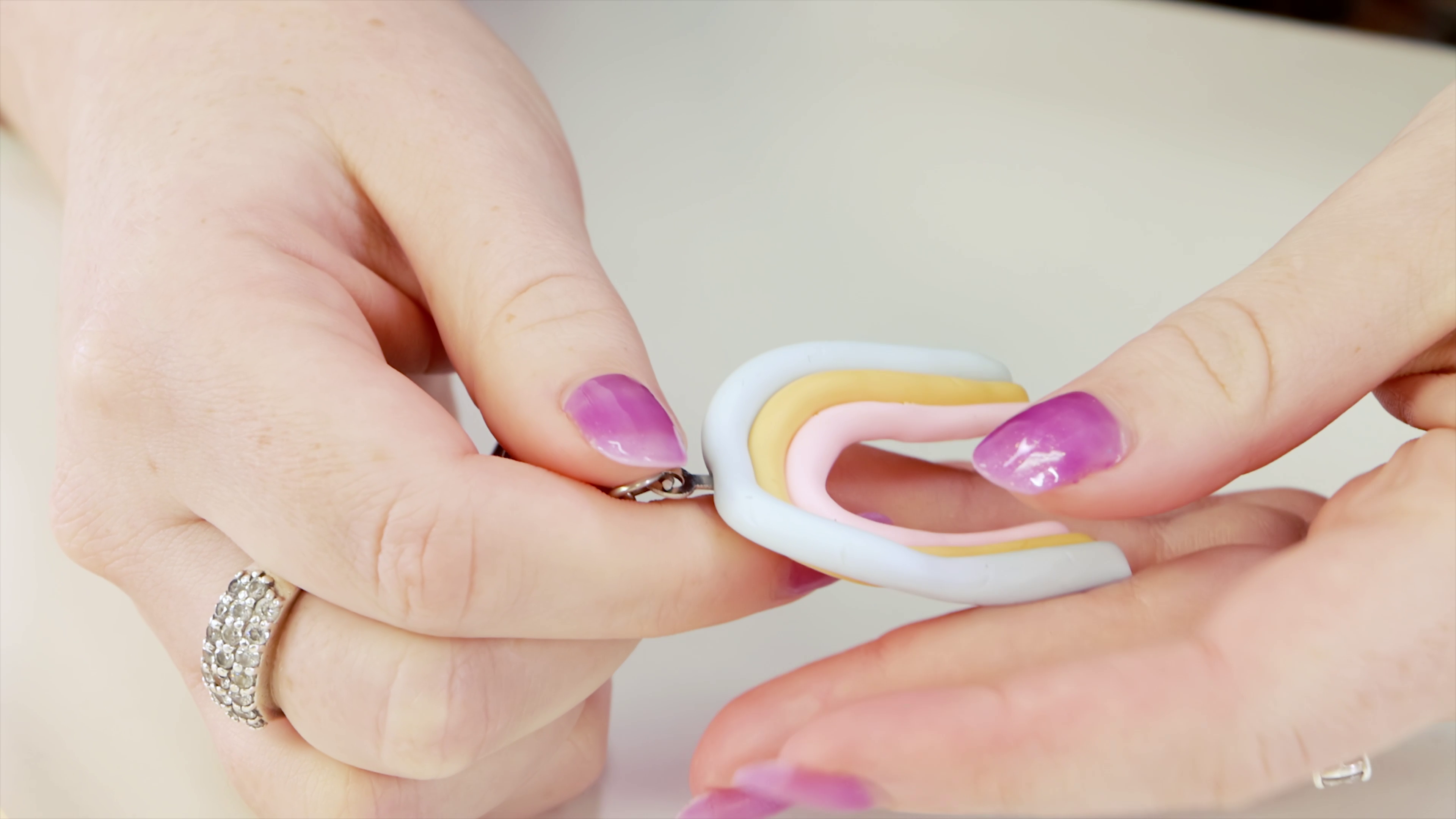We’ve been having a lot of fun splashing pouring paint around lately and we’re pretty happy with the results. If you’d like to give it a go too, or just brush up on your skills, check out our top tips for fluid art below.
1. Get the right consistency

If you’re not using pre-mixed pouring paints, you will need to add pouring medium to your acrylic paints to make them flow. We’d recommend using 1 part acrylic paint, to 2 parts pouring medium, to 1 part water.
2. Choose winning colour combinations

Choosing colours that work well together can be tricky if you don’t know what to look for. To find good combos, use a colour wheel to guide you and experiment to see which ones you like the best. Or, to make it really easy, just pick up one of our themed pouring paint packs.
3. Have everything ready to go

Take some time to think about what you’ll need for your pour painting before you start. Once the paint starts to flow, you’re going to want everything at your fingertips and ready to go.
4. Pick a good surface

Our go-to surface for fluid art is a stretched canvas or wooden painting board. The amount of paint you use can get heavy, so make sure you put wooden supports into the corners of your canvas to keep it tight (these wedges are usually included).
5. Experiment with different objects

Pour painting isn’t just for canvas or painting boards! Try it out on objects such as rocks, coasters or placemats to create some cute décor pieces.
6. Protect your work surface

Fluid art can get messy! Lay down a plastic sheet from your local hardware store to make cleaning up easy.
7. Start with a dirty pour or flip cup technique

There’s a whole range of fluid art techniques out there, but a great place to start is with a dirty pour or flip cup. To see it in action, check out our flip cup video tutorial. A dirty pour involves the same process as the flip cup technique, but instead of flipping the cup at the end you will slowly pour the paint out.
8. Gently tilt your canvas to spread the paint

Once you’ve poured the paint onto your canvas, gently tilt it to spread your colours around. The slower you tilt, the better because the colours won’t mix together as much. It can get messy, so make sure your work surface is covered!
9. Create cells with silicone oil

Add a dash of silicone oil to create more cells and patterns in your fluid artworks. We mix 5-10ml of silicone oil with 200ml of acrylic pouring paint and it works a treat.
10. Use a blow torch to bring out more cells

Using a blow torch is optional, but it can create some interesting effects. Once your paint has been poured, carefully hold the blowtorch horizontally to the surface and make sure the flame isn’t any closer than about an inch and a half. Move it quickly from side to side so that the heat causes the surface colours to contract and create tiny cell patterns.
Note: Cells form when the paint reacts with the blow torch heat, so silicone oil is not required for this technique.
11. Use foil paint to add extra detail

Once your fluid artwork dries, you can add some stunning details with foil paint. Use a fine liner paint brush to trace over the patterns and lines that have formed in your painting. Foil paint contains a high amount of pigment which makes it really pop!
12. Protect your artwork with varnish

Give your fluid artwork the finishing touch with a coat of varnish. This will protect the paint from fading and creates a nice, even gloss level. For the best results, we’d recommend using a wide, soft taklon brush. Start from the top of your artwork and use even, horizontal brush strokes to apply your varnish. Make sure each brush stroke overlaps with the previous one until the entire painting is covered.
Note: If you’ve used silicone oil in your artwork, you’ll need to clean it off before you start varnishing. We show you how to do this at the beginning of our fluid art special effects video.
For more fluid art tips check out our recent videos on how to do a flip cup and puddle pour painting, creating cells with silicone oil and DIY fluid art special effects. You can also share your artworks by tagging us on Instagram or Facebook using @montmarteart.


